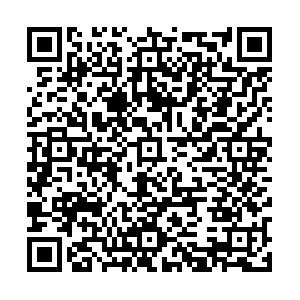Analysis of prognosis and influencing factors of 1737 cases of pediatric burns in a hospital of Anhui from 2013 to 2017
-
摘要:
目的 了解小儿烧伤的预后及影响治愈的危险因素。 方法 回顾性分析安徽医科大学第一附属医院烧伤科2013年1月至2017年12月1 737例住院烧伤患儿的病历资料, 总结其人口学特征、临床特征及影响预后的相关因素。 结果 Log-binominal回归分析模型显示, 1~岁、3~岁相比于7~12岁的患儿治愈率更高(均有P < 0.05);夏季烧伤(RR=0.861, 95% CI:0.690~1.074)未愈率较冬季烧伤高; 开水烫伤治愈率高于电击、火焰烧伤(均有P < 0.05);相比于特重度烧伤, 中度和重度烧伤的治愈率高(均有P < 0.05);相比于伴随并发症的患儿, 无并发症患儿的治愈率高(RR=4.58, 95% CI:2.642~7.941, P < 0.001), 农村患儿(RR=0.713, 95% CI:0.618~0.824)的未愈率较城市患儿高。 结论 小儿烧伤的治愈率为51.1%, 影响治愈的主要危险因素是7~12岁、夏季烧伤、电击及火焰烧伤(包括化学烧伤)、特重度烧伤、伴随并发症及农村烧伤患儿。 Abstract:Objective To analyze the prognosis of pediatric burns and its influencing factors. Methods Clinical data of 1 737 children with burns from January 2013 to December 2017 in the First Affiliated Hospital of Anhui Medical University was analyzed by retrospective method. The demographic, clinical features, and related factors affecting prognosis. Results Log-binominal regression model showed that the care rate was higher in children aged 1-and 3-compared with children aged 7-12(all P < 0.05); Boiling water burns had a higher care rate than electric shock and flame burns(including chemical burn)(allP < 0.05); Moderate and severe burns had a higher care rate than heavy severe burns(allP < 0.05); The unhealed rate of pediatric burns in summer was higher than burned in winter(RR=0.861, 95% CI:0.690-1.074); Children without complications had a higher care rate(P < 0.05); Children lived in rural areas have a higher unhealed rate than lived in urban areas(RR=0.713, 95% CI:0.618-0.824). Conclusions The care rate of pediatric burns was 51.1%. Major influencing factors included children aged 7-12, burned by electric and flame(including chemical burns), burned severe extraordinarily, burned in summer, and with complications, lived in rural. -
Key words:
- Pediatric burns /
- Prognosis /
- Risk factors
-
表 1 调查指标及赋值方法
Table 1. Survey indicators and assignment methods
因素 赋值情况 预后 0=治愈, 1=未愈 年龄(岁) 1=0~, 2=1~, 3=3~, 4=7~12 季节 1=春季, 2=夏季, 3=秋季, 4=冬季 烧伤原因 1=开水, 2=其他热液, 3=电击、火焰(包括化学烧伤等) 烧伤严重程度 1=中度, 2=重度, 3=特重度 有无并发症 0=无, 1=有 居住地 0=农村, 1=城市 表 2 影响小儿烧伤预后的单因素分析[n(%)]
Table 2. Single factor analysis of risk factors affect the prognosis of pediatric burns [n(%)]
变量类型 调查人数(例) 治愈(%) 好转(%) 恶化(包括其他)(%) H值 P值 性别 0.369 0.529 男 1 098(63.2) 564(51.4) 523(47.6) 11(1.0) 女 639(36.8) 324(50.7) 305(47.7) 10(1.6) 年龄(岁) 5.430 < 0.001 0~ 75(4.3) 40(53.3) 34(45.3) 1(1.3) 1~ 1 157(66.6) 545(47.1) 596(51.5) 16(1.4) 3~ 357(20.6) 209(58.5) 144(40.3) 4(1.1) 7~12 148(8.5) 94(63.5) 54(36.5) 0(0.0) 入院季节 62.863 < 0.001 春 429(24.7) 193(45.0) 229(53.4) 7(1.6) 夏 453(26.1) 248(54.7) 203(44.8) 2(0.4) 秋 410(23.6) 225(54.9) 182(44.4) 3(0.7) 冬 445(25.6) 222(49.9) 214(48.1) 9(2.0) 地区 244.803 < 0.001 农村 1 420(81.8) 758(53.4) 644(45.4) 18(1.3) 城市 317(18.2) 130(41.0) 184(58.0) 3(0.9) 烧伤原因 78.204 < 0.001 开水 1 302(75.0) 652(50.1) 634(48.7) 16(1.2) 热液 210(12.1) 101(48.1) 108(51.4) 1(0.5) 电击、火焰(包括化学烧伤) 225(13.0) 135(60.0) 86(38.2) 4(1.8) 烧伤严重程度 678.897 < 0.001 中度 148(8.5) 83(56.1) 63(42.6) 2(1.3) 重度 996(57.3) 435(43.7) 552(55.4) 9(0.9) 特重度 593(34.2) 370(62.4) 213(35.9) 10(1.7) 有无院前救治 2.416 0.120 有 592(34.1) 297(50.2) 289(48.8) 6(1.0) 无 1 145(65.9) 591(51.6) 539(47.1) 15(1.3) 有无并发症 147.372 < 0.001 有 174(10.0) 103(59.2) 67(38.5) 4(2.3) 无 1 563(90.0) 785(50.2) 761(48.7) 17(1.1) 注:未愈包括好转及恶化。 表 3 影响小儿烧伤未愈的因素的Log-binominal回归分析模型
Table 3. Analysis of the influencing factors of unhealed of pediatric burn based on the Log-binominal regression model
因素 n(例) n (%) RR(95%CI)值 P值 年龄(岁) 0~ 75 40(53.3) 1.646(0.843~3.213) 0.145 1~ 1 157 545(47.1) 1.947(1.186~3.197) 0.008 3~ 357 209(58.5) 2.473(1.495~4.090) < 0.001 7~12 148 94(63.5) 1.000 - 季节 春 429 193(45.0) 1.411(1.167~1.707) < 0.001 夏 453 248(54.8) 0.861(0.690~1.074) 0.018 秋 410 225(54.9) 1.296(1.062~1.581) 0.011 冬 445 222(49.9) 1.000 - 烧伤原因 开水 1 302 652(50.1) 1.403(1.011~1.946) 0.043 其他热液 210 101(48.1) 1.269(0.878~1.834) 0.205 电击、火焰(包括
化学烧伤)225 135(60.0) 1.000 - 烧伤严重程度 中度 148 83(56.1) 7.448(5.349~10.369) < 0.001 重度 996 435(43.7) 1.269(0.878~1.834) < 0.001 特重度 593 370(62.4) 1.000 - 有无并发症 < 0.001 无 1 563 785(50.2) 4.580(2.642~7.941) 有 174 103(59.2) 1.000 居住地 < 0.001 农村 1 420 758(53.4) 0.713(0.618~0.824) 城市 317 130 (41.0) 1.000 -
杨宗城.烧伤治疗学[M].北京: 人民卫生出版社, 2006.Yang ZC. Burn therapy[M]. Beijing: People's Medical Publishing House, 2006. 喻春红, 王霞.烧伤严重程度与应对行为及社会支持对中重度烧伤患者早期焦虑与抑郁的影响[J].中华烧伤杂志, 2016, 32(2): 109.Yu CH, Wang X. Effects of burn severity and coping behavior and social support on early anxiety and depression in patients with moderate to severe burns[J]. Chinese Journal of Burn, 2016, 32(2): 109. 李俊臻, 赖志伟, 郑卫东.清远小儿烧伤流行病学特点[J].广东医学, 2017, 38(增刊): 203-205. DOI: 10.13820/j.cnki.gd.Li JZ, Lai ZW, Zheng WD.Epidemiological characteristics of pe-diatric burns in Qingyuan[J].Guangdong Medicine, 2017, 38(supplement):203-205.DOI: 10.13820/j.cnki.gd. 黎鳌.黎鳌烧伤学[M].上海: 上海科学技术出版社, 2001: 12.Li A. Li Ao Burns[M]. Shanghai: Shanghai Science and Technology Press, 2001: 12. Wang Y, Pkm M. Advances and new technologies in the treatment of burn injury[J]. Adv Drug Delivery Rev, 2018, 123: 1-2. DOI: 10.1016/j.addr.2017.11.011. 黄春燕, 李晓华, 张慧利, 等. 1907例小儿烧伤情况分析[J].中国病案, 2017, 18(5): 94-97.Huang CY, Li XH, Zhang HL, et al. Analysis of 1907 cases of pediatric burns[J]. Chinese Medical Record, 2017, 18(5): 94-97. 罗慧, 李莉, 李孝建, 等.湘西地区小儿烧伤的流行病学分析[J].当代医学, 2019, 25(16): 26-28. DOI: 10.3969/j.issn.1009-4393.2019.16.011.Luo H, Li L, Li XJ, et al. Epidemiological analysis of pediatric burns in Xiangxi area[J]. Contemporary Medicine, 2019, 25(16): 26-28. DOI: 10.3969/j.issn.1009-4393.2019.16.011. Zhu L, Zhang Y, Liu L, et al. Hospitalized pediatric burns in north China: a 10-year epidemiologic review[J]. Burns, 2013, 39(5): 1004-1011. DOI: 10.1016/j.burns.2012.12.014. 田俊英, 李如兵, 郭光华, 等.江西烧伤中心2517例小儿烧伤患者流行病学分析[J].感染、炎症、修复, 2018, 19(4): 232-236. DOI: 10.3969/j.issn.1672-8521.2018.04.007.Tian JY, Li RB, Guo GH, et al. Epidemiological analysis of 2517 cases of pediatric burn patients in Jiangxi Burn Center[J]. Infection, Inflammation, Repair, 2018, 19(4): 232-236. DOI: 10.3969/j.issn.1672-8521.2018.04.007. Orozco-Valerio MJ, Miranda-Altamirano RA, Méndez Maga AC, et al. Trends in mortality by burns in Mexico, 1979-2009[J]. Gac Med Mex, 2012, 148(4): 349-357. http://www.ncbi.nlm.nih.gov/pubmed/22976753 胡德林, 方林森, 余又新, 等.早期综合治疗对重度烧伤MODS发生的影响[J].中华疾病控制杂志, 2014, 18(4): 340-342.Hu DL, Fang LS, Yu YX, et al. Effect of early comprehensive treatment on the occurrence of severe burn MODS[J]. Chin J Dis Control Prev, 2014, 18(4): 340-342. 李勇, 许瑾, 章祥洲, 等. 1552例小儿烧伤流行病学特点分析[J].中华损伤与修复杂志(电子版), 2014, 9(5): 506-511. DOI: 10.3877/cma.j.issn.1673-9450.2014.05.00.Li Y, Xu J, Zhang XZ, et al. Analysis of epidemiological characteristics of 1552 cases of pediatric burns[J]. Chinese Journal of Damage and Restoration(Electronic Version), 2014, 9(95): 506-511. DOI: 10.3877/cma.j.issn.1673-9450.2014.05.00. Sanjib T, Surendra JB. Epidemiology of burn injuries in Nepal: a systemic review[J]. Burns & Trauma, 2017, 5(10): 1-6. DOI: 10.1186/s41038-017-0075-y. -




 下载:
下载: 